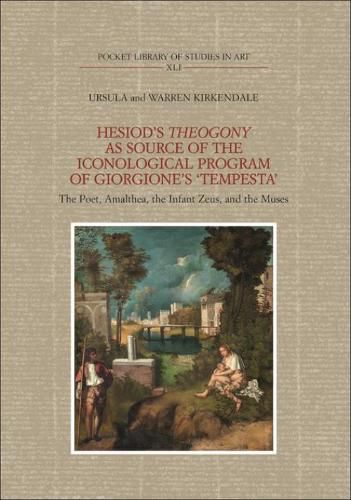Readings Newsletter
Become a Readings Member to make your shopping experience even easier.
Sign in or sign up for free!
You’re not far away from qualifying for FREE standard shipping within Australia
You’ve qualified for FREE standard shipping within Australia
The cart is loading…






This book explains how Giorgione’s famous picture shows the shepherd Hesiod undergoing his famous vision in which the Muses told him of his poetic mission; on the right the infant Zeus held by his nurse Amalthea one year after being rescued from being devoured by his father Cronus; and the altar of two columns erected by Zeus to commemorate his victory over Cronus, corresponding to his own altar with two columns in his birthplace Lyktos. The lightening is, of course, the attribute of Zeus. The muses are not seen, since Hesiod says they are “invisible’, but he often mentions their nine houses, shown in the painting.
$9.00 standard shipping within Australia
FREE standard shipping within Australia for orders over $100.00
Express & International shipping calculated at checkout
This book explains how Giorgione’s famous picture shows the shepherd Hesiod undergoing his famous vision in which the Muses told him of his poetic mission; on the right the infant Zeus held by his nurse Amalthea one year after being rescued from being devoured by his father Cronus; and the altar of two columns erected by Zeus to commemorate his victory over Cronus, corresponding to his own altar with two columns in his birthplace Lyktos. The lightening is, of course, the attribute of Zeus. The muses are not seen, since Hesiod says they are “invisible’, but he often mentions their nine houses, shown in the painting.